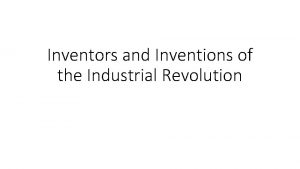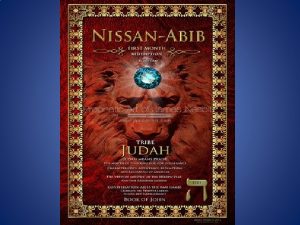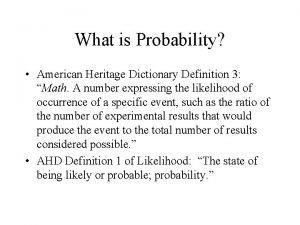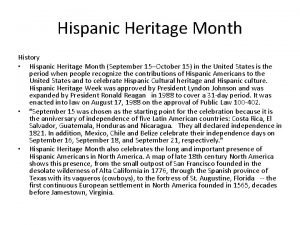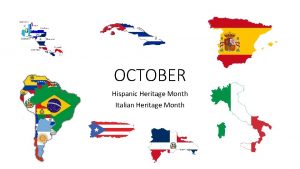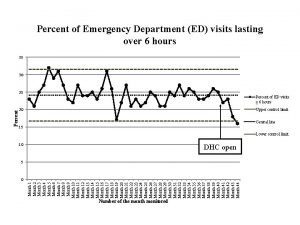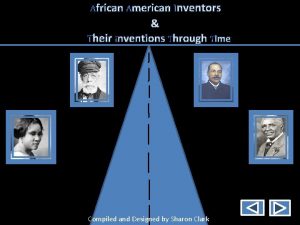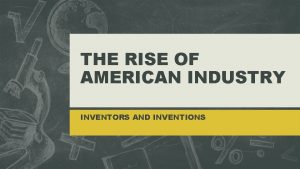Asian Pacific American Heritage Month Asian Inventors Inventions










- Slides: 10

Asian Pacific American Heritage Month

Asian Inventors & Inventions Chinese Inventions and Discoveries • Long recognized in the West for its natural and man-made monuments, silks and satins and delectable cuisine, China is also credited with inventions and discoveries which continue to influence our world today as they did at their inception. • For almost fifteen hundred years, the Chinese civilization has given birth to developments in navigation, spiritual balance, mathematics and natural prevention and diagnosis • Historically responsible for invention and the discovery of : -porcelain, paper, fishing reels, church bells, rudders, solar wind, circulation of blood in the human body, suspension bridge, technique for drilling for natural gas, iron plough, seed drill, mechanical clock, the seismograph, planting and hoeing techniques and the compass.

Inventions Compass – Recognized in Chinese as Si Nan – Early version of today's compass – Came in the form of a two-part instrument • first one a metal spoon made of magnetic loadstone • second one a square bronze plate which featured eight main directions (North, South, East, West, etc. ), symbols from the I-Ching oracle books, and the finer markings of 24 compass points with the 28 lunar mansions along the outer edge (In Chinese characters) – Two components of compass were spiritual and physical opposites (spoon representing Heaven and the plate representing Earth) when brought into contact would guide observers in the right direction – Original lacquered earth plate (dating to the 4 th century BCE) is currently on display at the Museum of Chinese History.

Kite • Two thousand years before the European "discovery" of flying sails, the first Chinese kites were already in flight • Emulated shapes of butterflies and birds • Chinese kites went further in their natural simulation by designing their kites to fly for over three days • Kites did not represent simply an entertaining and childish pastime • Used for such highly sophisticated purposes as military communication, referred to as "magic afoot, " and in some instances considered a threat

Seismograph • First seismograph, credited to the Royal Astronomer of the late Han Dynasty, Chang Heng • Designed as a cast bronze vessel with nine dragons facing different directions, each of which held a ball in its mouth • Any seismic activity detected by the vessel would prompt the balls to fall into the corresponding mouths of the nine frogs sitting below the dragons, which would point to the direction of the earth tremor • This natural measuring tool did not appear in the West until approximately 1, 500 years later, where it has since been instrumental in measuring and predicting earthquakes in places like California and Mexico

Stirrups • Before its appearance, riders had to hold on tightly to the horse's mane to avoid falling off, in addition to having to mount the horse by a flying leap or a pole vault • This invention did not appear in the West until 400 years later and one without which military and non-military equestrian use would never have progressed • Led to the development of another unique Chinese invention: water polo.

Practical Umbrella • Umbrellas in China were not simply used to protect the skin from the sun's rays: made from oil paper produced by the bark of the mulberry tree • First practical umbrella, invented in China during the Wei Dynasty (386 -532 AD) • Designed to protect from both the rain and the sun • Symbolic meaning as ceremonial ornaments and momentos of the Emperor's trust

Inventors • An Wang (1920 -1990), a Chinese-born American computer scientist, is best known for founding Wang Laboratories and holding over thirty-five patents including patent #2, 708, 722 for a magnetic pulse transfer controlling device which related to computer memory and was crucial to the development of digital information technology. Wang Laboratories was founded in 1951 and by 1989 employed 30, 000 people and had $3 billion a year in sales, with such developments as desktop calculators and the first word processors.

• Enrique Ostrea Doctor Enrique Ostrea received patent #5, 015, 589 and patent #5, 185, 267 for methods of testing infants for exposure to drugs or alcohol during pregnancy. Enrique Ostrea was born in the Philippines and immigrated to America in 1968. Ostrea continues to be honored for his contributions to pediatrics and neonatology.

• Tuan Vo-Dinh, who immigrated to the United States in 1975 from Vietnam, has received twenty-three patents mainly related to optical diagnostic equipment, including his first patents (#4, 674, 878 and #4, 680, 165) for badges that can be optically scanned to determine exposure to toxic chemicals. Vo-Dinh utilizes similar technology in patent #5, 579, 773 which is an optical method of cancer detection.

